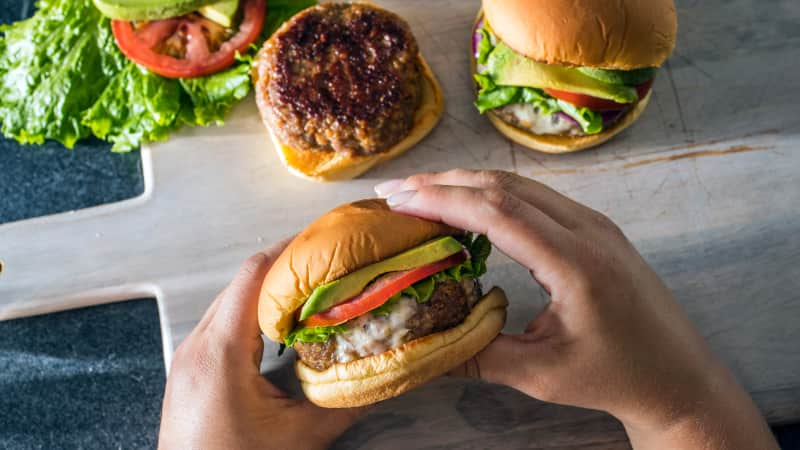My Goals and Discoveries
Pleasantly coarse texture
A few tablespoons of panko bread crumbs break up the finely ground turkey; gently tossing all the ingredients together and using a light touch to shape the patties helps keep the texture loose.
Juicy mouthfeel and rich flavor
Baking soda and gelatin keep the meat moist; help with browning, richness, and savory flavor; and provide a juicy mouthfeel. Melted butter adds richness, and soy sauce and Parmesan contribute savoriness.
Evenly cooked meat
Starting the patties in a cold skillet means the exteriors can slowly start to brown while the interiors rise in temperature to 160 degrees. Covering the skillet envelops the burgers in steam so that they cook quickly and evenly.








